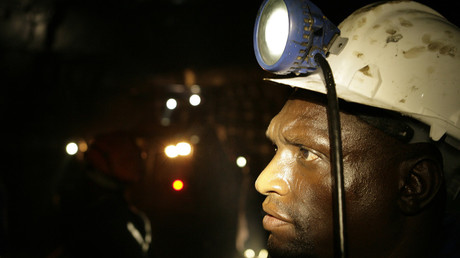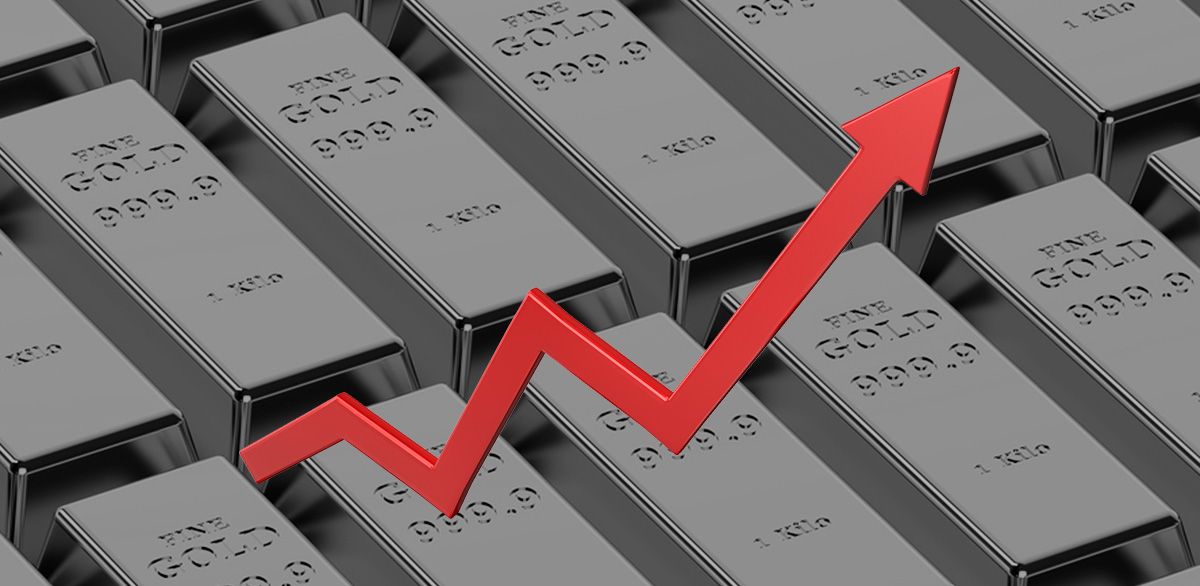- Joined
- Nov 29, 2016
- Messages
- 5,674
- Points
- 63
https://www.msn.com/en-sg/money/new...scoveries-are-shrinking/ar-AAA0b4m?li=BBr8Cnr
 The world is running out of GOLD: Mining experts warn discoveries are shrinking
The world is running out of GOLD: Mining experts warn discoveries are shrinking
George Martin
13/7/2018

Mum rescued kids as car 'exploded'

Lessons from SG's richest woman
 © Getty
© Getty
Mining experts have warned that the world's gold supplies could soon be depleted.
Experts across the industry said we will soon hit 'peak gold' - the point at which gold discoveries start to decline as there are no more new resources to discover.
According to scientists, the 'peak gold' point will be reached in 2019 and supplies of the precious metal are set to tail off year-on-year from that point onward.
Ian Telfer, chairman of Goldcorp, told the Financial Post last month: 'If I could give one sentence about the gold mining business… it's that in my life, gold produced from mines has gone up pretty steadily for 40 years.
 © Provided by Associated Newspapers Limited Global gold supplies are expected to peak in 2019 but industry experts have warned they may already have peaked
© Provided by Associated Newspapers Limited Global gold supplies are expected to peak in 2019 but industry experts have warned they may already have peaked
'Well, either this year it starts to go down, or next year it starts to go down, or it's already going down… We're right at peak gold here.'
At Goldcorp, production has dropped off since 2015 when it produced 3.4 million ounces of gold. It produced 2.8 million in 2016 and 2.5 million last year.
Telfer also warned that the current price of gold reflects the feeling in the market that the supply of gold could soon dry up.
Also watch: SC refuses to stay RBI's ban on cryptocurrencies
(Video provided by Business Today)
'Are we not looking for it? Are we bad at finding it? Or have we found it all? My answer is we found it all. At US$1,300 (per ounce of) gold, we found it all,' he added.
I don't think there are any more mines out there, or nothing significant. And the exploration records indicate that.'
And Telfer certainly isn't alone, as several other industry experts have piled in to suggest gold may have had its day.
Last month, Rudy Fronk, Chairman and CEO of Seabridge Gold said: 'Peak gold is the new reality in the gold business with reserves now being mined much faster than they are being replaced.'
While Nick Holland, CEO of South Africa's largest gold producer Gold Fields, said: 'We were all talking about how production was going to increase every year. I think those days are probably gone.'
Kevin Dushnisky, President of mining giant Barrick Gold, commented: 'Falling grades and production levels, a lack of new discoveries, and extended project development timelines are bullish for the medium and long-term gold price outlook
https://schiffgold.com/key-gold-news/are-we-running-out-of-gold/
Are We Running Out of Gold?

July 12, 2018 by SchiffGold 0 7
Last May, the head of the world’s largest mining company said we’ve found all of the gold. Goldcorp CEO Ian Telfer told the Financial Times, “we’re right at peak gold here.”
Peak gold is the point where the amount of gold mined out of the earth will begin to shrink every year, rather than increase, as it has done pretty consistently since the 1970s.
You could blow off Telfer’s comments off as hyperbole or the musings of a contrarian except that he’s not the only person in the gold mining industry worried about decreasing gold production. As a recent Business Insider article reported, many of the top people responsible for supplying the world’s gold say we’re running out of the yellow metal.
Mining execs are concerned because they are no longer finding large deposits to replace aging mines. Last fall, Franco-Nevada chairman Pierre Lassonde said he expects a significant dip in gold production in the coming years.
Consider just one example. South Africa once led the world in gold production. More than 40% of all the gold mined in human history came from the Witwatersrand Basin. But early this year, a study came out saying South Africa could run out of gold within four decades. Analysts say that at current production levels, the world’s fifth largest gold producer has only 39 years of accessible gold reserves remaining.
Technology could help boost production. As people began worrying about peak oil, new drilling techniques allowed oil companies to reach previously unreachable deposits. Meanwhile, other industries like solar and wind began developing substitutes for oil. But as Business Insider notes:

Get Peter Schiff’s latest gold market analysis – click here for a free subscription to his exclusive monthly Gold Videocast.
Interested in learning how to buy gold and buy silver?
Call 1-888-GOLD-160 and speak with a Precious Metals Specialist today!
 Mining Exec: We've Found All the Gold
Mining Exec: We've Found All the Gold
May 17, 2018
In “Key Gold Headlines”
 South Africa Gold Output Down 16% in May; Eighth Straight Month of Decline
South Africa Gold Output Down 16% in May; Eighth Straight Month of Decline
July 13, 2018
In “Key Gold Headlines”
 Gold Mine Output in Key Countries Could Reach "Generational Lows"
Gold Mine Output in Key Countries Could Reach "Generational Lows"
August 23, 2018
In “Key Gold Headlines”
gold production, Ian Telfer, mining, peak gold, Pierre Lassonde, Rudy Frink
Related Posts
China Increases Official Gold Reserves for Third Straight Month as Anti-Dollar Push Continues
 China added to its official gold reserves for the third straight month in February as the country continues efforts to minimize its exposure to the US dollar. The People’s Bank of China added 10 tons of gold to its horde last month. It has accumulated an additional 32 tons of the yellow metal since the […]
China added to its official gold reserves for the third straight month in February as the country continues efforts to minimize its exposure to the US dollar. The People’s Bank of China added 10 tons of gold to its horde last month. It has accumulated an additional 32 tons of the yellow metal since the […]
https://www.rt.com/business/432838-global-gold-shortage-alarm/
HomeBusiness News
World running out of gold & there’s no substitute, experts warn
Published time: 12 Jul, 2018 09:42
Get short URL

© David Gray © Reuters
Mining companies are no longer finding new deposits of gold to replace their aging mines. South Africa’s 140-year-old gold industry – which was once the world’s largest – is currently facing a major crisis. The country’s mineral council says 75 percent of gold mines are unprofitable or barely making money.
Read more
 75% of South African gold mines unprofitable – mineral council
75% of South African gold mines unprofitable – mineral council
“We were all talking about how production was going to increase every year. I think those days are probably gone,” said Nick Holland, CEO of South Africa’s largest gold producer Gold Fields.
He was echoed by Rudy Fronk, chairman and CEO of Seabridge Gold, who noted that “Peak gold is the new reality in the gold business with reserves now being mined much faster than they are being replaced.”
According to Kevin Dushnisky, president of mining giant Barrick Gold, “Falling grades and production levels, a lack of new discoveries, and extended project development timelines are bullish for the medium and long-term gold price outlook.”
The biggest warning comes from mining executive Ian Telfer, chairman of Goldcorp. In an interview with Financial Post, he said: “If I could give one sentence about the gold mining business… it’s that in my life, gold produced from mines has gone up pretty steadily for 40 years. Well, either this year it starts to go down, or next year it starts to go down, or it’s already going down… We’re right at peak gold here.”
One of the most well-respected and knowledgeable mining experts in the world, Pierre Lassonde, also says we’re reaching ‘peak gold’.
“If you look back to the 70s, 80s and 90s, in every one of those decades, the industry found at least one 50+ million-ounce gold deposit, at least ten 30+ million-ounce deposits, and countless 5 to 10 million ounce deposits.
But if you look at the last 15 years, we found no 50-million-ounce deposit, no 30-million-ounce deposit and only very few 15 million ounce deposits,” said Lassonde, the billionaire founder of gold royalty giant Franco-Nevada and former head of Newmont Mining.
For more stories on economy & finance visit RT's business section
George Martin
13/7/2018
Mum rescued kids as car 'exploded'
Lessons from SG's richest woman
Mining experts have warned that the world's gold supplies could soon be depleted.
Experts across the industry said we will soon hit 'peak gold' - the point at which gold discoveries start to decline as there are no more new resources to discover.
According to scientists, the 'peak gold' point will be reached in 2019 and supplies of the precious metal are set to tail off year-on-year from that point onward.
Ian Telfer, chairman of Goldcorp, told the Financial Post last month: 'If I could give one sentence about the gold mining business… it's that in my life, gold produced from mines has gone up pretty steadily for 40 years.
'Well, either this year it starts to go down, or next year it starts to go down, or it's already going down… We're right at peak gold here.'
At Goldcorp, production has dropped off since 2015 when it produced 3.4 million ounces of gold. It produced 2.8 million in 2016 and 2.5 million last year.
Telfer also warned that the current price of gold reflects the feeling in the market that the supply of gold could soon dry up.
Also watch: SC refuses to stay RBI's ban on cryptocurrencies
(Video provided by Business Today)
'Are we not looking for it? Are we bad at finding it? Or have we found it all? My answer is we found it all. At US$1,300 (per ounce of) gold, we found it all,' he added.
I don't think there are any more mines out there, or nothing significant. And the exploration records indicate that.'
And Telfer certainly isn't alone, as several other industry experts have piled in to suggest gold may have had its day.
Last month, Rudy Fronk, Chairman and CEO of Seabridge Gold said: 'Peak gold is the new reality in the gold business with reserves now being mined much faster than they are being replaced.'
While Nick Holland, CEO of South Africa's largest gold producer Gold Fields, said: 'We were all talking about how production was going to increase every year. I think those days are probably gone.'
Kevin Dushnisky, President of mining giant Barrick Gold, commented: 'Falling grades and production levels, a lack of new discoveries, and extended project development timelines are bullish for the medium and long-term gold price outlook
https://schiffgold.com/key-gold-news/are-we-running-out-of-gold/
Are We Running Out of Gold?

July 12, 2018 by SchiffGold 0 7
Last May, the head of the world’s largest mining company said we’ve found all of the gold. Goldcorp CEO Ian Telfer told the Financial Times, “we’re right at peak gold here.”
Peak gold is the point where the amount of gold mined out of the earth will begin to shrink every year, rather than increase, as it has done pretty consistently since the 1970s.
You could blow off Telfer’s comments off as hyperbole or the musings of a contrarian except that he’s not the only person in the gold mining industry worried about decreasing gold production. As a recent Business Insider article reported, many of the top people responsible for supplying the world’s gold say we’re running out of the yellow metal.
Mining execs are concerned because they are no longer finding large deposits to replace aging mines. Last fall, Franco-Nevada chairman Pierre Lassonde said he expects a significant dip in gold production in the coming years.
If you look back to the 70s, 80s and 90s, in every one of those decades, the industry found at least one 50+ million-ounce gold deposit, at least ten 30+ million-ounce deposits, and countless 5 to 10 million ounce deposits. But if you look at the last 15 years, we found no 50-million-ounce deposit, no 30-million-ounce deposit and only very few 15 million ounce deposits.”
And just last month, Seabridge Gold chairman Rudy Frink also expressed concern about shrinking gold reserves.Peak gold is the new reality in the gold business with reserves now being mined much faster than they are being replaced.”
Barrick Gold president Kevin Dushnisky said even as the number of new discoveries falls off, ore grades and productions levels in existing mines are declining. He said, “Extended project development timelines are bullish for the medium and long-term gold price outlook.”Consider just one example. South Africa once led the world in gold production. More than 40% of all the gold mined in human history came from the Witwatersrand Basin. But early this year, a study came out saying South Africa could run out of gold within four decades. Analysts say that at current production levels, the world’s fifth largest gold producer has only 39 years of accessible gold reserves remaining.
Technology could help boost production. As people began worrying about peak oil, new drilling techniques allowed oil companies to reach previously unreachable deposits. Meanwhile, other industries like solar and wind began developing substitutes for oil. But as Business Insider notes:
There’s not really a substitute for gold. And the biggest players in the space are saying we’re running out.”
The Business Insider article notes that it’s hard to pinpoint a top or bottom in gold production, but the looming decline in gold supply could present “an interesting opportunity” for investors, especially considering gold prices have fallen in recent weeks. This may be the time to buy gold.The long-term fundamentals seem pretty obvious- the people responsible for supplying the world with gold are saying the world is running out of gold and that supply is declining at an alarming rate.”
When we look at the future of gold, it’s easy to get caught up in the latest price move, trade wars and the most recent policy pronouncement by the Federal Reserve. Of course, it’s important to keep abreast of the latest developments in the news cycle. But investors should never lose sight of the most basic fundamentals – supply and demand. The gold industry may well be entering a long-term — and possibly irreversible — period of less available gold. As mining companies find it more difficult to pull gold out of the earth, it will mean less gold for refiners to produce for the consumer market. Remember, gold gets its value from its scarcity.Get Peter Schiff’s latest gold market analysis – click here for a free subscription to his exclusive monthly Gold Videocast.
Interested in learning how to buy gold and buy silver?
Call 1-888-GOLD-160 and speak with a Precious Metals Specialist today!
 Mining Exec: We've Found All the Gold
Mining Exec: We've Found All the GoldMay 17, 2018
In “Key Gold Headlines”
 South Africa Gold Output Down 16% in May; Eighth Straight Month of Decline
South Africa Gold Output Down 16% in May; Eighth Straight Month of DeclineJuly 13, 2018
In “Key Gold Headlines”
 Gold Mine Output in Key Countries Could Reach "Generational Lows"
Gold Mine Output in Key Countries Could Reach "Generational Lows"August 23, 2018
In “Key Gold Headlines”
gold production, Ian Telfer, mining, peak gold, Pierre Lassonde, Rudy Frink
Related Posts
China Increases Official Gold Reserves for Third Straight Month as Anti-Dollar Push Continues

https://www.rt.com/business/432838-global-gold-shortage-alarm/
HomeBusiness News
World running out of gold & there’s no substitute, experts warn
Published time: 12 Jul, 2018 09:42
Get short URL

© David Gray © Reuters
- 18
Mining companies are no longer finding new deposits of gold to replace their aging mines. South Africa’s 140-year-old gold industry – which was once the world’s largest – is currently facing a major crisis. The country’s mineral council says 75 percent of gold mines are unprofitable or barely making money.
Read more
 75% of South African gold mines unprofitable – mineral council
75% of South African gold mines unprofitable – mineral council “We were all talking about how production was going to increase every year. I think those days are probably gone,” said Nick Holland, CEO of South Africa’s largest gold producer Gold Fields.
He was echoed by Rudy Fronk, chairman and CEO of Seabridge Gold, who noted that “Peak gold is the new reality in the gold business with reserves now being mined much faster than they are being replaced.”
According to Kevin Dushnisky, president of mining giant Barrick Gold, “Falling grades and production levels, a lack of new discoveries, and extended project development timelines are bullish for the medium and long-term gold price outlook.”
The biggest warning comes from mining executive Ian Telfer, chairman of Goldcorp. In an interview with Financial Post, he said: “If I could give one sentence about the gold mining business… it’s that in my life, gold produced from mines has gone up pretty steadily for 40 years. Well, either this year it starts to go down, or next year it starts to go down, or it’s already going down… We’re right at peak gold here.”
One of the most well-respected and knowledgeable mining experts in the world, Pierre Lassonde, also says we’re reaching ‘peak gold’.
“If you look back to the 70s, 80s and 90s, in every one of those decades, the industry found at least one 50+ million-ounce gold deposit, at least ten 30+ million-ounce deposits, and countless 5 to 10 million ounce deposits.
But if you look at the last 15 years, we found no 50-million-ounce deposit, no 30-million-ounce deposit and only very few 15 million ounce deposits,” said Lassonde, the billionaire founder of gold royalty giant Franco-Nevada and former head of Newmont Mining.
For more stories on economy & finance visit RT's business section










/https://public-media.si-cdn.com/filer/68/07/68073882-7d72-4600-8581-1932d355f87f/cr0rj3.jpg)











